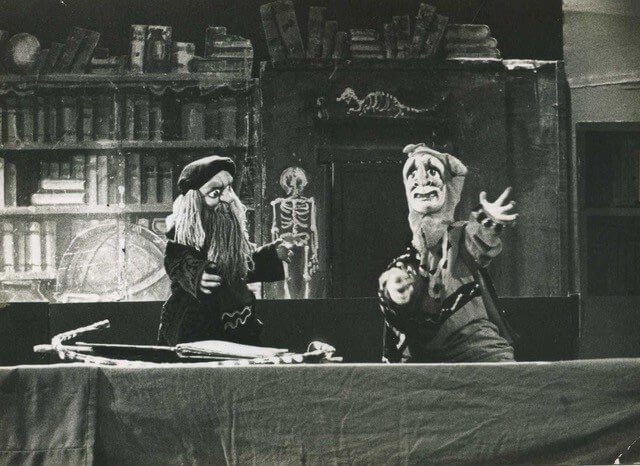Yoko Yamaguchi // From Puppet to Figur and Ningyo to Puppet: A Comparative Study of Changing Aesthetic Values in Late 19th - Early 20th Century Puppetry in Germany and Japan.
My research investigates the modernization of puppetry in Japan and Germany in the late 19th to early 20th century, how puppetry in these countries interacted with other arts of the same period, and how the aesthetic values of puppetry in both places changed through this interaction.
The aesthetic values of puppetry in Japan and Germany were moving in opposite directions at that time. Traditional Japanese puppet theater, ningyo-joruri (also known as bunraku), originated in the 17th century and by the 19th century was regarded as one of the most sophisticated performing arts in Japan. At the onset of the twentieth century, however, around the time of the Russo-Japanese War (1904-1905), it rapidly lost the support of audiences and critics. Yet, some artists, writers, and critics did not abandon puppet theater but looked to German creative models and critical discourses in trying to re-conceptualize and articulate the unique values of puppet theatre.
 At that time, German puppetry was undergoing its own process of transformation, from a vulgar folk form into a respected modern art. The artistic puppet theater of Munich, with which the sculptor Ignatius Taschner and other Jugendstil artists were involved, was the most highly esteemed of the Germany’s puppet theaters among Japanese critics. Learning about the cooperation that existed between fine artists and puppet theatres in Germany, the Japanese came to realize the uniqueness of their own puppet tradition and consider the possibility of creating new artistic models that could demonstrate the originality of artists with unique visions.
At that time, German puppetry was undergoing its own process of transformation, from a vulgar folk form into a respected modern art. The artistic puppet theater of Munich, with which the sculptor Ignatius Taschner and other Jugendstil artists were involved, was the most highly esteemed of the Germany’s puppet theaters among Japanese critics. Learning about the cooperation that existed between fine artists and puppet theatres in Germany, the Japanese came to realize the uniqueness of their own puppet tradition and consider the possibility of creating new artistic models that could demonstrate the originality of artists with unique visions.
Munich, the city in which German artistic puppetry blossomed, is the focus of my investigation, the aim of which is to determine which German artists from the late 19th to early 20th century were invested in puppetry’s potential, how much work they actually did within puppet theatre in terms of design, building, or creating promotional matetrials, and how their efforts were received by audiences and critics. I hope through this investigation to reveal the changes that took place first within German and then Japanese puppetry’s aesthetic understanding of puppetry at this period in greater detail.
[Abbildung: "Dr. Faust" by Puppet Theater PUK in Tokyo (1949)]
